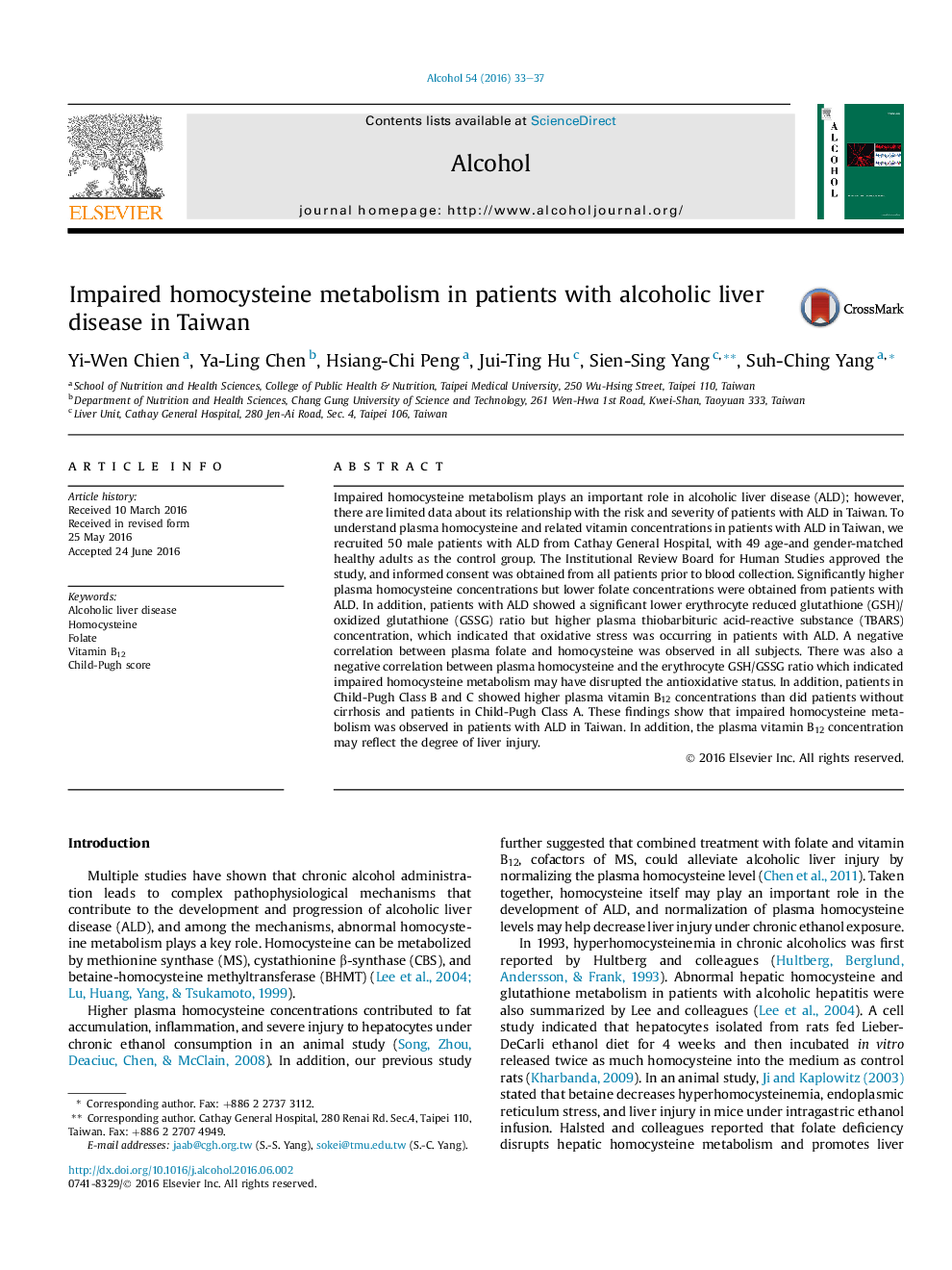| Article ID | Journal | Published Year | Pages | File Type |
|---|---|---|---|---|
| 1066801 | Alcohol | 2016 | 5 Pages |
•The plasma homocysteine and related vitamin concentrations in patients with ALD in Taiwan were investigated.•Impaired homocysteine metabolism was observed in patients with ALD in Taiwan.•The plasma vitamin B12 concentration may reflect the degree of liver injury in patients with ALD in Taiwan.
Impaired homocysteine metabolism plays an important role in alcoholic liver disease (ALD); however, there are limited data about its relationship with the risk and severity of patients with ALD in Taiwan. To understand plasma homocysteine and related vitamin concentrations in patients with ALD in Taiwan, we recruited 50 male patients with ALD from Cathay General Hospital, with 49 age-and gender-matched healthy adults as the control group. The Institutional Review Board for Human Studies approved the study, and informed consent was obtained from all patients prior to blood collection. Significantly higher plasma homocysteine concentrations but lower folate concentrations were obtained from patients with ALD. In addition, patients with ALD showed a significant lower erythrocyte reduced glutathione (GSH)/oxidized glutathione (GSSG) ratio but higher plasma thiobarbituric acid-reactive substance (TBARS) concentration, which indicated that oxidative stress was occurring in patients with ALD. A negative correlation between plasma folate and homocysteine was observed in all subjects. There was also a negative correlation between plasma homocysteine and the erythrocyte GSH/GSSG ratio which indicated impaired homocysteine metabolism may have disrupted the antioxidative status. In addition, patients in Child-Pugh Class B and C showed higher plasma vitamin B12 concentrations than did patients without cirrhosis and patients in Child-Pugh Class A. These findings show that impaired homocysteine metabolism was observed in patients with ALD in Taiwan. In addition, the plasma vitamin B12 concentration may reflect the degree of liver injury.
